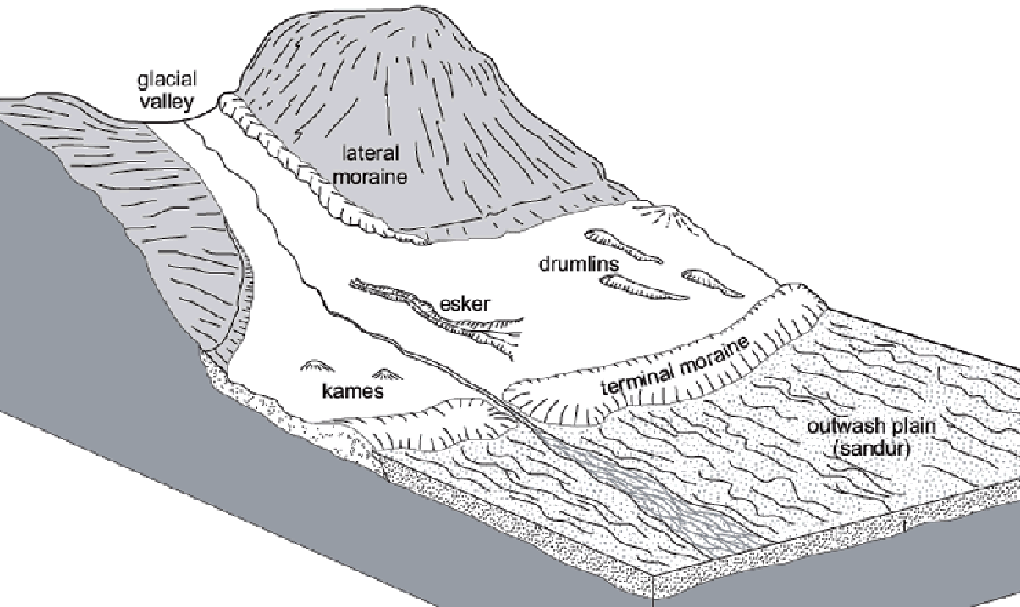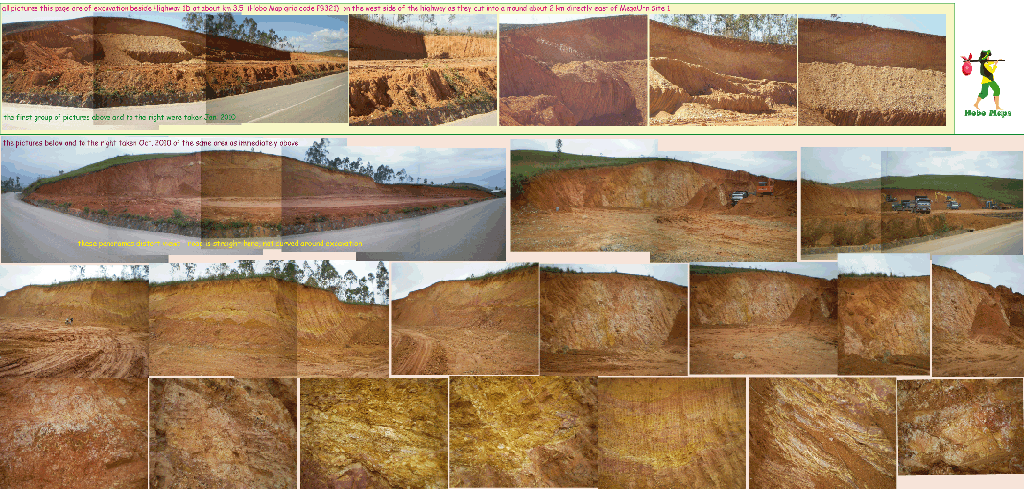
Mounds at Plain of Jars - Strange mounds at PDJ - HoboMaps.com - Go to Plain of Jars Info Page - - - Home
The Plain of Jars (PDJ) landscape is the home to strange looking softly-rounded earthen mounds that may have some connection with the origin of the jars. Understanding these mounds might help to determine:
1. if a former lake existed on the PDJ
2. how the jars were transported
3. if ancient rivers of ice were at work on the PDJ
4. what the landscape of the PDJ may have been like when the jars were being carved
5. if the mounds were terraced for agriculture and irrigated by lake water
6. what the civilization might have been like when the jars were carved
Analyzing these strange mounds may be a good way to help unravel these mysteries since they are easily accessible and open to research. If the inner composition of mounds that today have carved jars on them is similar to glacially-derived moraine mounds it would open the possibility (but not proof) that some of the boulders carved into jars were carried to the mounds by rivers of ice and may not have been transported there by people.
The ridge just south of Jar Site 2 Ridge looks similar to a typical terminal moraine as depicted below:

A way to help determine if these strange PDJ mounds are glacial moraines is to analyze their interior composition and look for loose aggregate materials such as clay, sand, rounded pebbles and boulders as well as other unstratified materials that are typically found in moraine mounds. A moraine mound would not have bedrock, solid seams of rock or stratified layers in it nor contain significant organic materials.
The excavation pictures below of a mound not far from Jar Site 1 show a composition of materials that could have been brought there by glacial activity. A "Push" terminal moraine is formed when a glacier acts like a bulldozer by scraping sediment from the valley floor through which it passes and piling it up at the end of the glacier. A "Dump" terminal moraine is formed when a glacier continues melting at the front in the same general place every year and dumps debris and other materials carried in the ice in a mound. The interior of a Push Moraine would consist of sediment scraped from the valley floor through which it passed, with few if any boulders, while a Dump Moraine would consist of debris carried down from the mountain above the valley and might contain boulders and other rocks that would match the type of stone found in the source mountains.

Lack of Normal Erosion on PDJ Mounds - If we could understand why these mounds are not eroding like normal hills and don't have ridges and gullies cascading down from the peaks it may support the theory that they were submerged or partially submerged in a former lake at the PDJ. This lack of normal erosion could also be explained by human activity such as terracing for agricuture and if we knew what type of agriculture was involved we could better understand the civilization of the ancient residents and how they could afford to expend so much time and effort on megalithic jars.
Concentric Circles - Many of the mounds on the PDJ have concentric "lines" around them. The British surveyor James McCarthy who visited the PDJ in 1884 & 1893 was curious as to what the concentric lines around the mounds were the result of and asked a local person for an explanation. We quote from his book Surveying and Exploring in Siam (1900) from page 190 when he was in the Ngan area just southeast of the PDJ in 1893 as follows: "With me was a man who had been my guide in 1884 from Muang Pang to Muang Ngan. ... Rounding a spur, we had a view of the whole valley of Muang Ngan. The lower slopes of the hills, bare of trees, were bright with various shades of green, and the contour lines, at intervals of about 2 feet, were traced with great regularity. My companion was a man over sixty years of age, and on my asking him how the lines had been formed, he replied : “They are paths made by buffaloes and bullocks when grazing.” I remarked that it was a beautiful country, and the old man warmed to the subject: "Yes," he said; "I was born here; my father, grandfather, and all before me, as far as I know, were born here. Those old fortifications that are seen all round belong to a time beyond the memory of man, for my grandfather knew nothing about them; but those lines that you can make out along the side of the hill were once cart-roads for bringing fuel to Ngan. Those traces of terraces on the hill-slopes show the fields which were once planted with “garden” rice. There we made reservoirs by bunding the streams, and channels led the water to the fields. Once the country was crowded with a happy and prosperous population, but they are all gone, and the glory of the land is departed."
With regard to the above quote - "bunding the streams" apparently means forming embankments to channel the flow of water into reservoirs. This must be in reference to streams on the higher hills and not referring to the softly rounded mounds on the PDJ since these mounds are small and low and don't have streams. But terraces on these mounds for growing "garden rice" is a likely possibility, especially if remnants of a former lake were nearby to provide a source of water for irrigation.